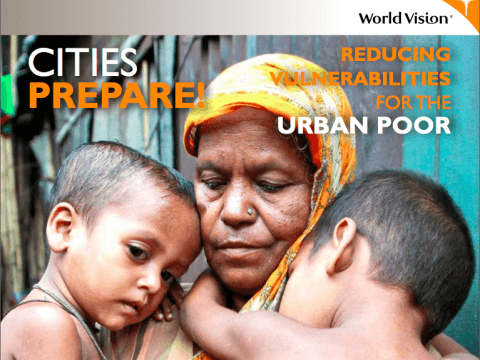Disaster Preparedness in Bangladesh

As the international community marks the one-month anniversary of Super Typhoon Haiyan, a new report from humanitarian agency World Vision calls for stronger disaster planning for cities to avoid widespread future devastation.
This report indicates that Bangladesh is increasing its capacity in disaster preparedness. The regularity and devastating impact of natural disasters along Bangladesh’s coastline places pressure on its government to take all measures possible on Disaster Risk Reduction (DRR). Post-disaster recovery phase provides good opportunity to integrate DRR into rehabilitation and development work. Communities and authorities alike must do all they can to avoid a similar situations recurring in the future.
In the last five years, Bangladesh’s national policy has influenced the capacity and commitment of municipal governments who in turn have ensured implementation of some laws, regulations and standards as communities rebuild. Urban communities are responding positively to elements of disaster risk reduction within their control, and that their willingness to change behaviours for greater disaster resilience will contribute to more liveable cities in the long-term. However, increasing pollution levels continue to pose a significant disaster hazard to the ever increasing urban populations, particularly the children.
In Southeast Asia alone- the UN says, some 35 per cent of the urban population, roughly 190.7 million people, lives in slums or squatter settlements, making them particularly vulnerable to disasters. World Vision’s Cities Prepare report calls on leaders to recognize and act on the dangers facing people living on the margins in urban centres. The report also highlight seven Asian cities – Chittagong, Bangkok, Jakarta, Kolkata, Kathmandu and Port Moresby, in order to capture the varying preparedness contexts in cities across Asia.
The report recommends governments place more emphasis on disaster risk reduction (DDR) programs for homes, schools, businesses and in developing policies in areas such as health care and municipal planning. It also calls for more partnerships to eliminate gaps in disaster planning at the municipal level and increased involvement of children in disaster preparedness plans.
Angelina Theodora, World Vision’s Humanitarian and Emergency Affairs Director in the Asia Pacific region says “If we can make that a more intentional process, children can contribute to strengthening the resilience of their families and their communities.”
Here, it should be mentioned that , World Vision Bangladesh is also initiating Urban Disaster Risk Reduction program in Dhaka city associating with union, ward, community and school based disaster management committee.